Po Delta, Italy: highlights of a visit to the natural Po Delta region


Visit Po Delta
The Po Delta is a predominantly natural area to the east of Ferrara and north of Ravenna , in the north-east of the Emilia-Romagna region of Italy, where the River Po divides into several smaller rivers before meeting the Adriatic Sea.
Much of the Po Delta is now protected, either as part of the large Parco del Delta del Po, or by one of the smaller nature reserves that are found in the region, and is also designated as a World Heritage Site.
Of course, although we mention some of the specific characteristics of the region below it is really the overall beauty of the valley landscape of the Po Delta that is interesting to see, with large expanses of water populated by many species of birds and further enriched by the jagged profiles of picturesque islands and their vegetation which provide a great beauty and charm that varies according to the ever changing conditions of season, climate, light.
Nature and environment
Above all the region is known for the wildlife, and in particular the birds that are found in the wetlands and lagoons, with several thousands of species having been identified in the region. Many of these birds are very rare, and ornithologists from all over the world visit - especially for the bird-watching fair based around Comacchio at the end of April each year.
Those who visit the Po Delta and wish to immerse themselves in nature can visit the remarkable spectacle of the Comacchio Valleys which have a unique atmosphere, with hundreds of birds that live in the lagoon (such as purple herons, mallards, moorhens, coots, and cormorants, a recent arrival).
The wetland area has a unique vegetation with the landscape including trees such as oak, pine, tamarisk, beech and cane.
The Po Delta Valleys together form a huge complex of coastal dunes which act as natural defences against sea erosion and are very important from the naturalistic point of view. The Comacchio Valleys also act as a kind of natural refuge for some forms of natural life that have now largely disappeared.
Advertisement
Exploring the Po Delta and Comacchio valleys
The S309 road that runs from north to south through the region is a good base to start your explorations, and also provides access to some of the small towns and beach resorts along the coast. If you prefer to explore without your car, there are numerous other possibilities - the region is ideal for cycling, walking and boat trips. Perhaps the best cycle route is the 80 mile trip along the bank of the Po river.
During the trip you can stop to taste the typical dishes of Comacchio such as the fish, especially eels, which have been caught in the valleys for centuries. Mullets, sea bass and flounder are among the other species of large fish in the former marshes of Comacchio.
It is said that the Duke Ercole I (1431-1505) sent the Lord of Rimini one hundred salted eels for lent each year.
The local fish dishes for you to enjoy are numerous, along with oysters, mussels, clams, lobsters, shrimps. Among the traditional pasta dishes are seafood risotto, spaghetti with crab, fish soup and grilled fish, and eel risotto.
Local highlights
Comacchio itself is a pretty fishing village (the local specialty is eels) with several narrow canals, a famous 17th century bridge that crosses three of them, and fish restaurants where you can sample the local produce.
Also worth visiting is the abbey at Pomposa to the north of Comacchio which houses some impressive frescoes and mosaics and also has a collection of interesting buildings around the abbey itself.
You can find more local travel ideas in the Emilia-Romagna guide .
Map of Po Delta and places to visit
Po delta places to visit.

Brenta canal
Along the course of the Brenta canal you can see several important villas and gardens

The beaches and the canals through the historic centre combine to make Chioggia a popular destination

The 17th and 18th century palazzos in Comacchio are separated by numerous canals and bridges
...or see all our recommended places to visit in Emilia-Romagna
Select your language
Site search

Cinque Terre

Montepulciano

Italy This Way - copyright 2009 - 2024 :: privacy policy
Po Delta Park
One of the most beautiful oases in italy, and the second largest wetland in europe.
- NATURE & OUTDOOR
Forests and green pinewoods , an abundant flora and fauna population, valleys of freshwater and brackish water and rivers that flow into the Adriatic: these are some of the pieces that make up the extraordinary mosaic of the Po Delta , a magnificent example of biodiversity, in which water has been the absolute protagonist for centuries.
Here, where the land and the sky blend together, there are captivating natural treasures like few others that exist in the world, so unique as to have been designated a UNESCO World Heritage site in 1999 and a UNESCO MAB Reserve in 2015.
Two parks protect this wonderful natural district, which covers an area of more than 66,000 hectares and stretches over two regions . A maze of scenic possibilities that includes, on one side, north of the mighty River Po, the Veneto Regional Park; and, on the other, towards the south, the Emilia-Romagna Regional Park.
Anyone would be amazed at the wide variety of environments and cultural attractions that this area can offer. Located next to each other, in an uninterrupted flow, there are the remains of primitive Mediterranean scrubland, hygrophilous woods, coastal lagoons, brackish valleys and freshwater wetlands that intermingle with the ancient vestiges of Etruscan and Roman settlements, Byzantine mosaics and the charm of Benedictine and Este-era architecture.
The Po Delta in the Ferrara area
Woods reminiscent of dark, gloomy forests where deer prance majestically ( the Mesola Woods ), flamingos and cormorants, surrounded by reed beds, stroll in the fog through shallow brackish lagoons, and small fishing villages linked to clam and eel fishing ( Goro and Comacchio ).
From the River Po to the valleys of Comacchio, this is the landscape that presents itself to those who visit the Ferrarese part of the delta.
The possible itineraries are endless and the amazement that accompanies them, indescribable. The same amazement as you will feel when you come across the monumental Pomposa Abbey or in one of the many Delizie Estensi (such as the Belriguardo at Voghiera , Del Verginese at Portomaggiore and Mesola Castle), traces of the splendour of the past that was in perfect balance between nature, harmony and beauty.
The Po Delta in the Ravenna area
The Ravenna part of the park leads to the south of the valleys of Comacchio, and from here opens up, with pinewoods and “piallasse” [flat area of plains, valleys and lagoons in the area around Ravenna], to fascinating natural areas and sites of cultural interest, such as the Basilica of Sant’Apollinare in Classe , a UNESCO monument since 1996. There are silent valleys stretching out to the sea where specimens of vegetation grow and rare species of fauna reside, the Boscoforte and Punte Alberete oases , the ancient pine forests of San Vitale and Classe , which were praised by Dante and Boccaccio and, finally, further down, you come to the ancient Salt Pans of Cervia , a favourite place for flocks of pink flamingos .
The environment and scenery
Despite the heavy intervention of man over the course of the centuries, starting from the sea and entering inland, you will encounter many different habitats . There are dune and sand plants , ancient wooded areas (such as the Mesola Woods), coastal pinewoods and submerged forests , as well as ash trees, willows, poplars and aquatic species, such as the white water-lily or the common reed.
However, it is mainly from the point of view of fauna that this area surprises. Well over 300 species of birds have chosen this area as their stopping point and reproduction area. A unique ecosystem that, every year, sees cormorants, Mediterranean gulls and common terns return to nest here.
Along with the birds, on the golden beaches, between the reed-beds, the lagoons and the valleys, you can see fallow deer, red deer and small mammals, as well as amphibians, sturgeons and eels.
What can you do there?
On foot, by boat, by bike or on horseback : depending on the season, there are many relaxing ways to experience this unique natural ecosystem, nestled between the beautiful sites of three art cities – Ravenna , Ferrara and Venice.
The many species of birds have transformed the area into a haven for birdwatching enthusiasts with specific itineraries , picnic, service and recreational vehicle parking areas and observation sites, as well as an international festival (The Birdwatching Fair).
A visit to the Po Delta Park means having the opportunity to make direct contact with the culture, local traditions and culinary specialities of a land that has always been on the “margins”, far away from the chaos of the town centres.
Events such as Primavera Slow – which take place every year from March to June – help lovers of outdoor life to interact with the Po Delta region through slow and sustainable tourism.
The best advice is to go to the visitor centres scattered throughout the region ( Alfonsine , Argenta , Cervia , Comacchio , Massenzatica, Mesola , Ostellato , Sant’Alberto and Savio) to get all the information you need to fully enjoy a dream holiday in the area.
You may also like...
Cervia città giardino, family weekend in ravenna, cerviavventura, find the best facilities for your holidays in emilia romagna.
Delta del Po
Po delta park.
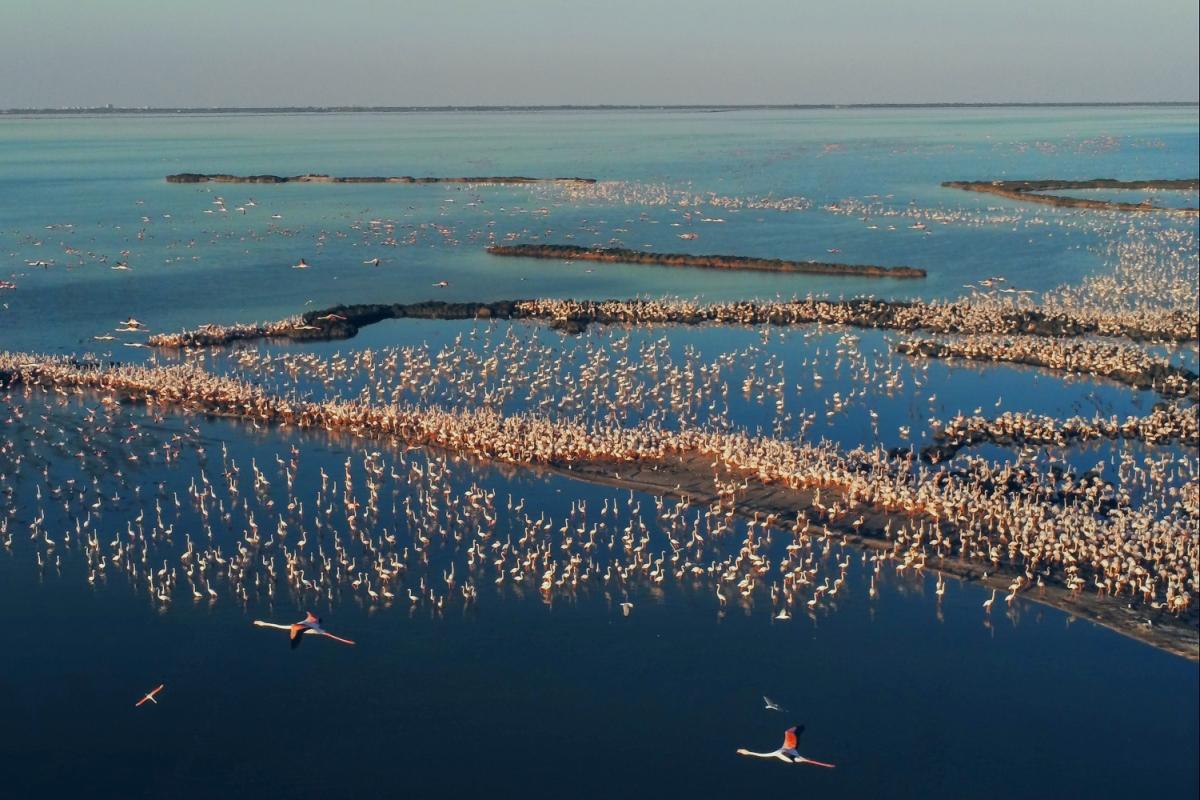
Did you know that the Po Delta Park represents one of the most important wetlands in Europe and the largest in Italy , hosting hundreds upon hundreds of animal and vegetable species? Did you also know that it can boast a double UNESCO recognition ?
On this website, we will try to help you discover all, but really all, the secrets of the Park, a real paradise for naturalists, biologists, tourists and birdwatchers. A vast green area surrounded by centuries-old woods, pine forests and oases alternating with precious architecture.
Let’s explore it together!
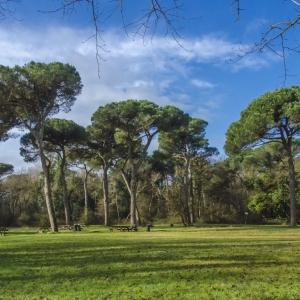
64,000 hectares in total, spread over 2 regions; over 400 animal species and nearly 1,000 plant species. These are just a few figures relating to the Po Delta Park, which comes to life from the end of the course of the Great River, on the eastern border with the Po Valley, and stretches over a total area of more than 52,000 hectares in the Emilia Romagna region, between the provinces of Ferrara and Ravenna, and of approximately 12,000 hectares in the Veneto region in the province of Rovigo .
Everything revolves around the river Po, the absolute protagonist of the formation of the Po Valley, thanks to the incessant transport of earth and sand over thousands of years. However, beyond the morphology of the territory, it has also profoundly influenced the history of the people living in the Po Delta area: the continuous changes of the river course, in fact, gradually created different riverbeds generating new opportunities for them to create settlements along its shores, and therefore where they could develop both their economic and social lives. The river Po was, therefore, an extraordinary resource first of all for its supply of water, then for fishing, for irrigation and finally as a communication route. Subsequently, populations have also inevitably suffered both the periods in which there were floods as well as those when the level of water was extremely low, adapting to the will of a river that, between the possibilities of development on the one hand and floods and droughts on the other, it has always been strictly linked to the very life of the people who resided in the local area.
Thus, this is a story dating back thousands of years, capable of establishing a captivating territory between land and water, a changing landscape in which woods, pine forests and flooded forests alternate with internal wetlands with either fresh or salty water . Still today, in fact, the Po Delta represents a dynamic environment, in continuous evolution, where nature is free to give Man new lands that have emerged or at least to recover parts of them. This vast environmental wealth is also reflected in the numerous animal and plant species identified within the Park: almost 300 species of birds, 50 species of fish, 10 species of amphibians, 15 species of reptiles, 40 species of mammals and over 1,000 species of plants.
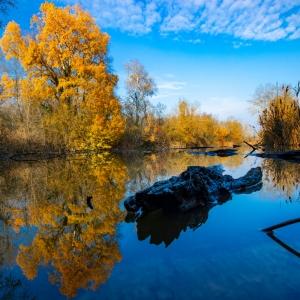
UNESCO MAB Biosphere Reserves
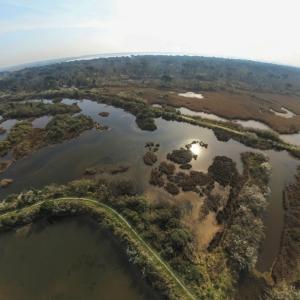
Stations of the Po Delta Park
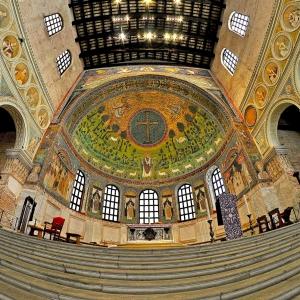

Places of Po Delta
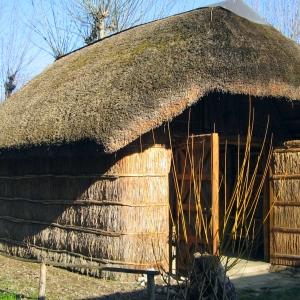
Visitor Centers and Museums
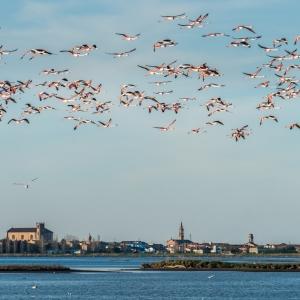
Our environments
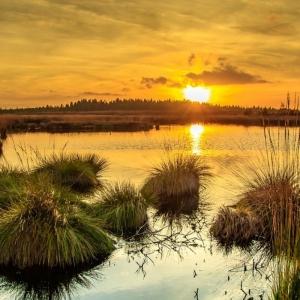
Places not to be missed
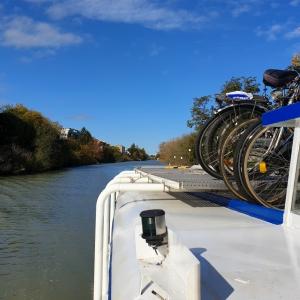
Trip itinerary ideas
The Po Delta Park in Emilia-Romagna
by Giulia Delaini /// April 27, 2022 Estimated reading time: 4 minutes
On the eastern border of the Po Valley, where the great river, the Po, flows into the Adriatic Sea, along the 40 km of coastline between Ferrara and Ravenna coast and near Argenta, there is a park listed as a UNESCO World Heritage Site: Ferrara, city of the Renaissance and the Po Delta . The Po Delta Park, together with the Veneto side, forms the Po Delta Biosphere Reserve , recognised as a UNESCO MaB in 2015 as an ecosystem in which the enhancement of biodiversity is combined with sustainable development strategies. An extraordinary territory between the provinces of Ferrara and Ravenna, characterised by ducal residences and the adjacent reclaimed areas, which constitutes a unique cultural and natural landscape. A paradise not only for birdwatchers. On foot, by boat, by bicycle, by motorbike or on horseback: there are many ways to explore this wetland ecosystem, just a short distance from the beauty and history of cities such as Ravenna, Ferrara and Venice. Follow us to discover the wonders of the Park!
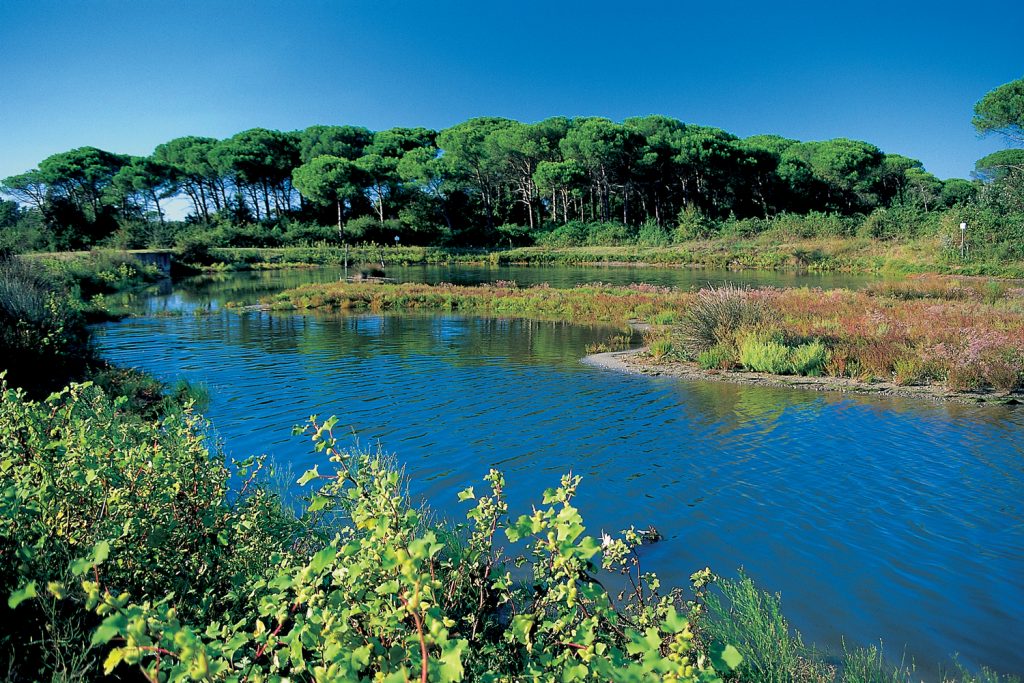
San Vitale Pinewood | Pic by RavennaTourism
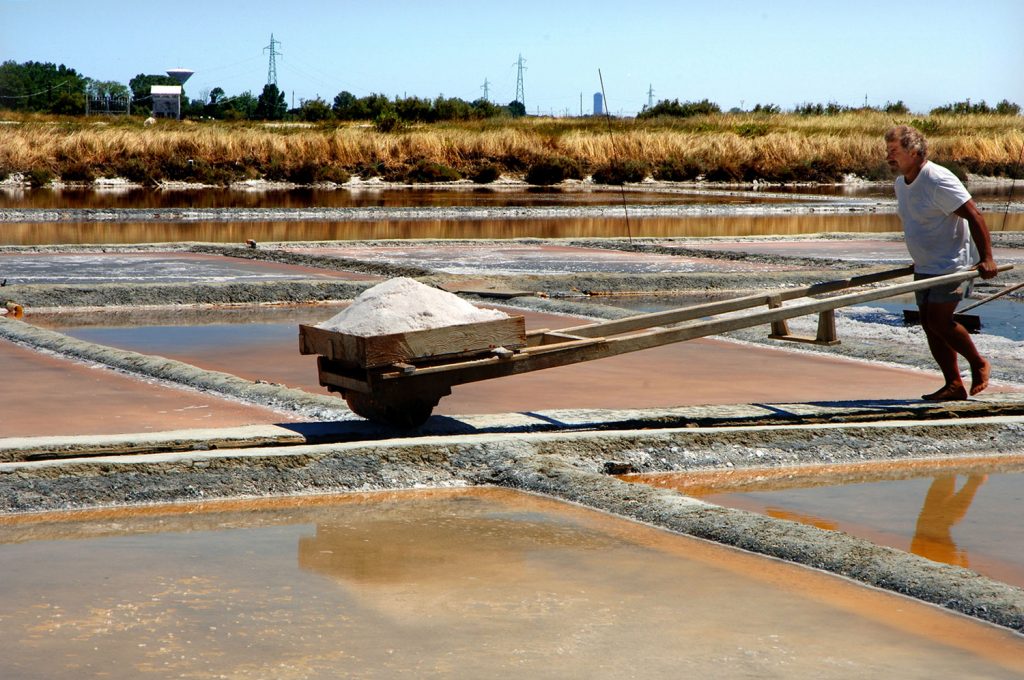
Cervia Saltpans | Ph. Cervia Turismo
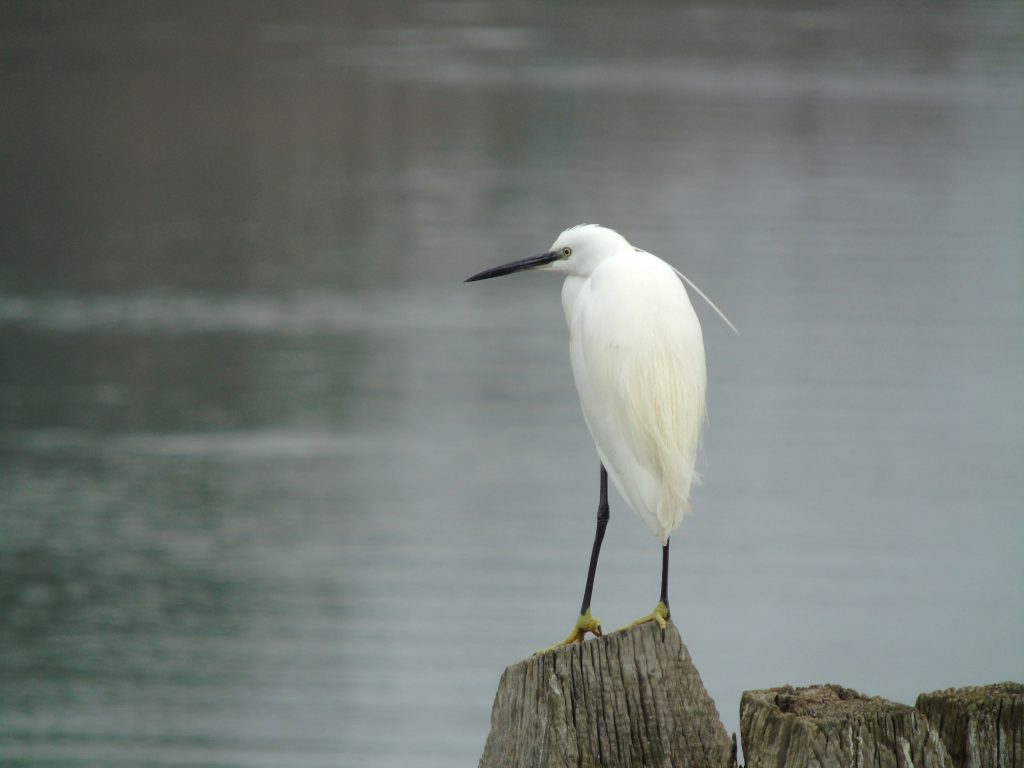
Egret | Pic by nadia_virgili for WLM2017
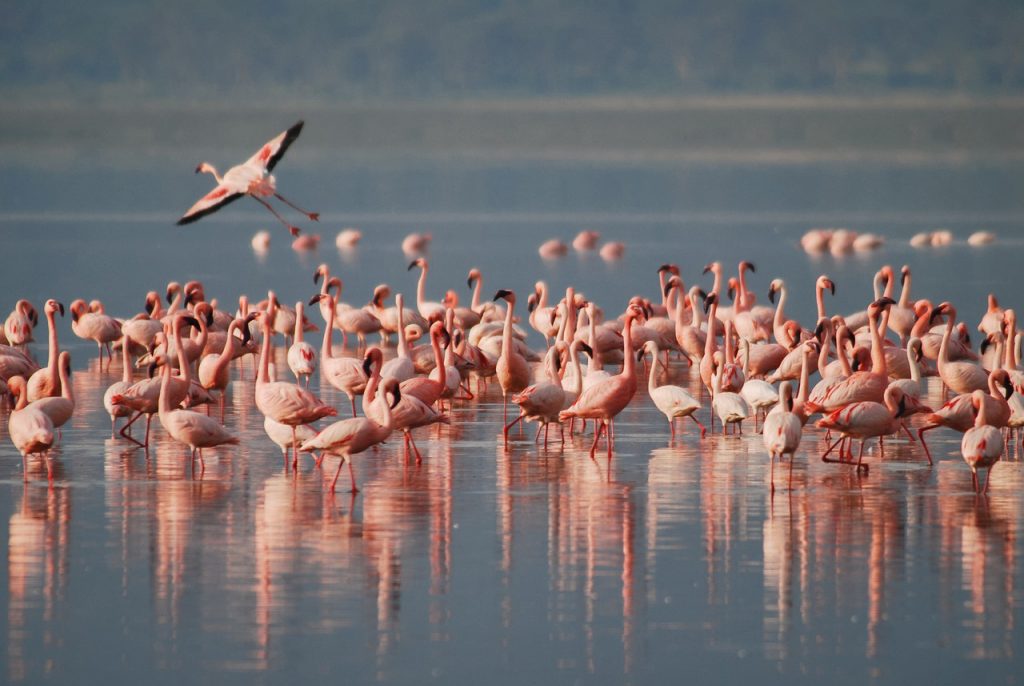
Flamingoes | Pic by PrimaveraSlow
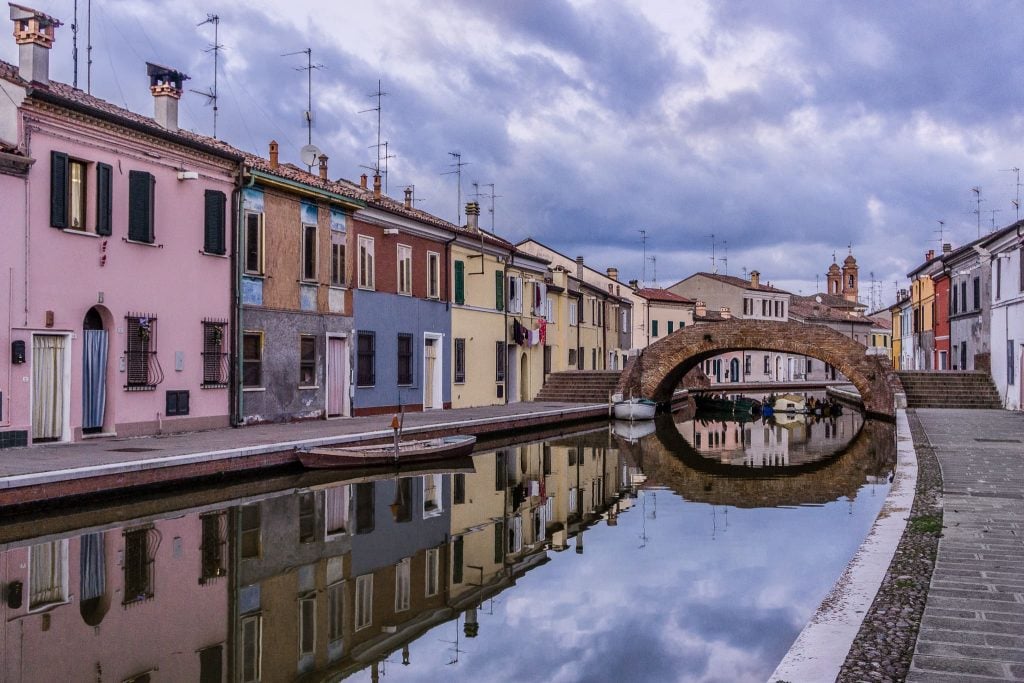
Comacchio Historic centre | Pic by vanni_lazzari for WLM2017
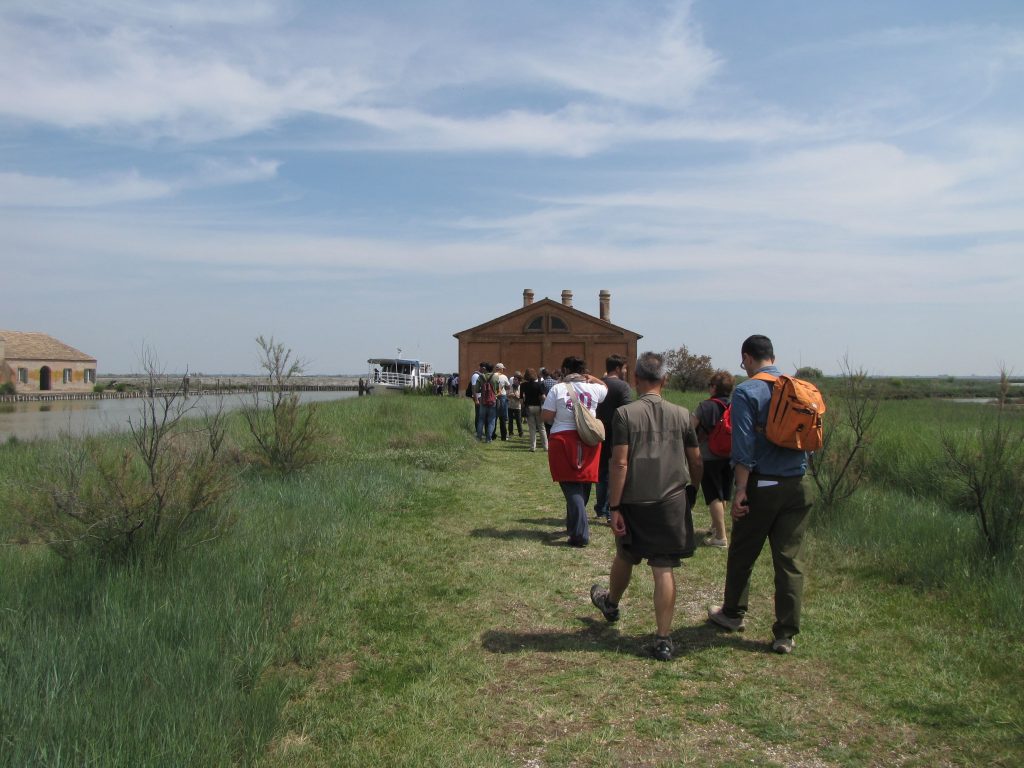
Pic by servizio_turismo for WLM2016
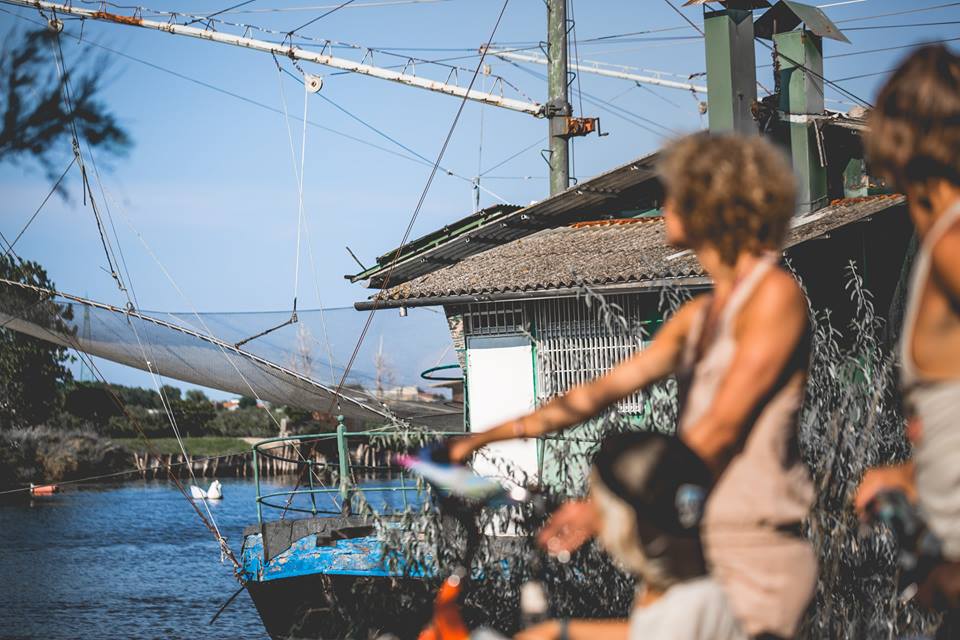
Primavera Slow (Bike tour) | Ph. Delta2000
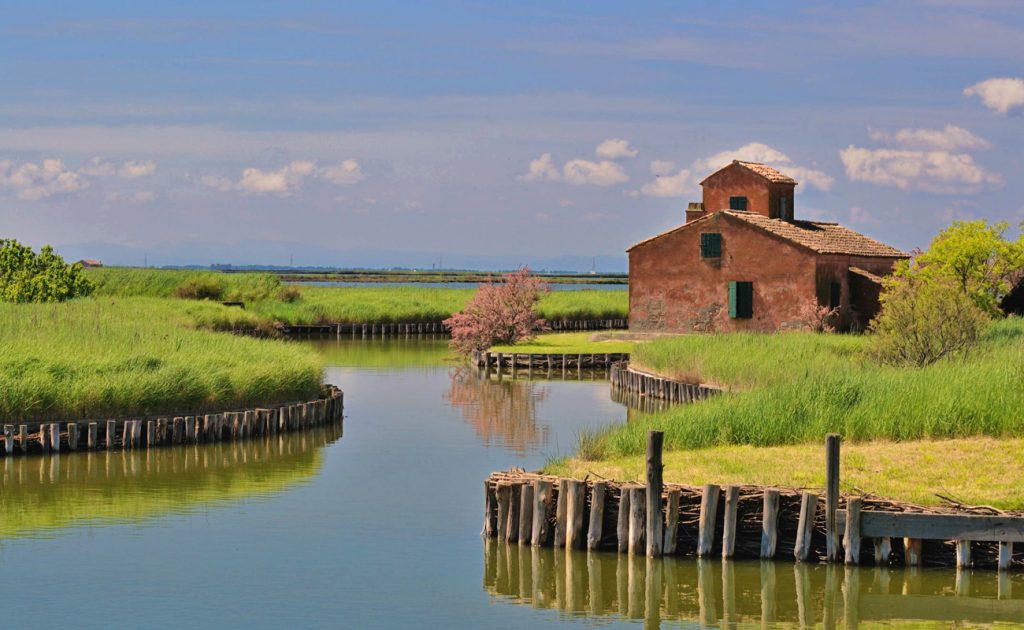
Comacchio Valleys | Ph. Parcodeltapo.it
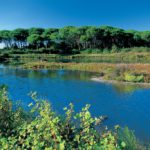
- What to do in the Po Delta Park
- 3 places to visit within the Po Delta Park
- Recommended excursions in the Po Delta Park
- Visiting centers in the Po Delta Park
- How to get there
The Po Delta Park offers experiences to be enjoyed, captured and shared all year round. Here are the activities we recommend for each season.
This land offers many excursions to be made on foot or by bike. There is also the chance to explore and admire the Fossil Dunes of Massenzatica which are evidence of the position of the Adriatic coastline during the Bronze Age. Among the events, we would like to point out Primavera Slow, a rich programme (educational workshops, exhibitions, guided tours, sporting events, food and wine tours) to which at least one weekend should be devoted. And if birdlife is your passion, you cannot miss the International Birdwatching Fair , perfect for people who love photography, slow tourism, biodiversity and sustainability.
All you need to do is remember to wear a good sunscreen (and a mosquito repellent for those with delicate skin) to explore the Park’s valleys by motorboat through canals and reeds. Horse-riding enthusiasts should definitely take a romantic ride along the water at dawn or at dusk. If you feel like relaxing at the end of the day, we recommend a therapeutic break at the Thermae Oasis .
Even if the days begin to shorten when Autumn arrives, there are many ways to get to know the Park: by motorbike amidst nature and art, at the restaurant tasting the local delicacies during the Eel Festival. You can walk between the silence and lush of the pinewoods of Ravenna or in the folds of history visiting Garibaldi’s hut .
When the weather worsens, a visit to the Park can focus on the cultural heritage: exploring the 9 towns that are part of the Park (Argenta, Ostellato, Comacchio, Codigoro, Goro and Mesola in the Ferrara area and Cervia, Ravenna and Alfonsine in the Ravenna area) or the numerous museums and monuments ( Basilica of Sant’Apollinare in Classe , Delizie Estens i, House Museum Remo Brindisi , Pomposa Abbey ) that dot the territory.
- Mesola Woodland Natural Reserve | This wooded area has medieval origins and lies on the dune banks formed by the Po di Goro and Po di Volano, a reminder of the ancient forests that existed until a few centuries ago along the Adriatic coast. Between woodland and marshland, it is also possible to meet the “King of the Woods”: the Mesola Deer. A unique experience to live, rediscovering the charm of an unspoilt nature..
- Cervia Saltpans | To the south of the park is an environment of great natural and scenic interest, as it is populated by Flamingos, Black-winged Stilts and other protected species. There are many experiences to be had (walks, boat trips or visits at sunset) to learn about the history and tradition of Cervia’s salt production.
- Valli di Comacchio | The extensive wetland and marsh area, recognised as a Wetland of International Importance, offers spectacular natural scenery. Along the bodies of water and stretches of sand, between valleys, canals, fishing huts, pine forests and woods, it is impossible to remain unimpressed and not capture the extraordinary views that the area offers..
The Park is an extraordinary example of biodiversity: these are the recommended excursions to get to know the many faces of water (fresh, salt or brackish), the undisputed protagonist of the Park. In Ferrara we point out the excursion to the Argenta Valleys to be explored on foot, by bike or by electric boat, that of Volano-Mesola-Goro that runs along the two branches of the great river dedicated to birdwatchers and the excursion to Comacchio , city lagoon of ancient origins called the little Venice, to visit along the canals aboard the typical “batane”. In Ravenna, easy and suggestive excursions in the Pineta di San Vitale and Piallassa della Baiona, in Punta Alberete to admire the flooded forest or along the Lamone River to follow the flight of the Herons. On both territories there are many dedicated paths with shields with huts, specially set up for the observation of the various species of bird life present. Also worthy of note to walk lovers, including the 2nd, 3rd and 6th stages of the Via Romea Germanica that touch Ferrara, Argenta and Ravenna.
The regional headquarters of the Park is located in Comacchio (FE): there are many visitor centers (Alfonsine, Argenta, Cervia, Comacchio, Massenzatica, Mesola, Ostellato, Sant’Alberto and Savio) where you can find all the information and tourist material you need in order to fully enjoy this territory.
Ferrara Terra e Acque
Parco del Delta del Po
Giulia Delaini
You may also like.
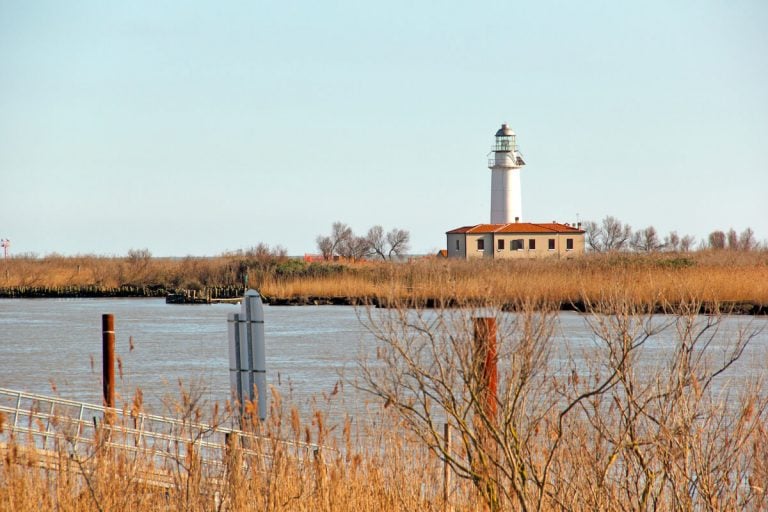
5 Experiences to do in the Po Delta Park of Emilia-Romagna
by Elisa Mazzini /// February 18, 2019
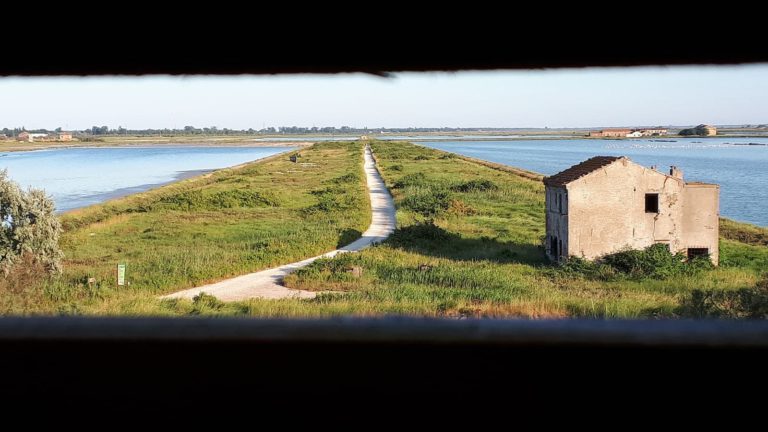
Primavera Slow: months of activities in the Po Delta Park
by Davide Marino /// February 27, 2024
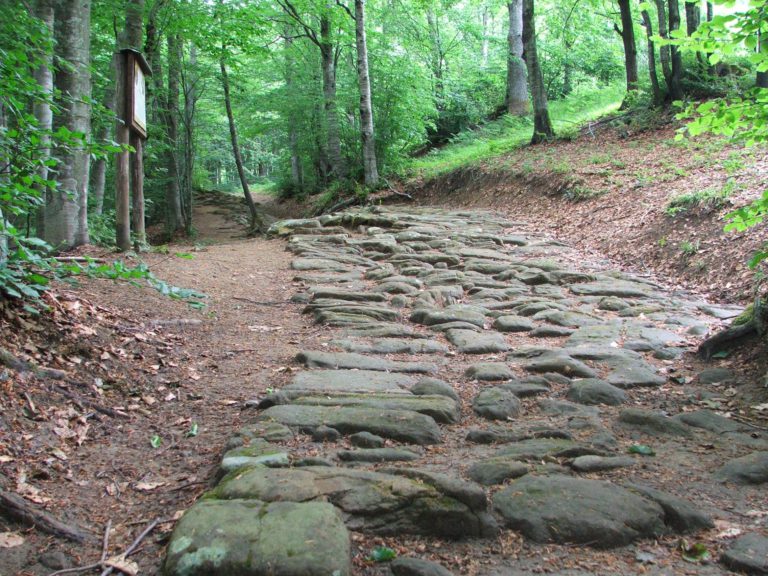
Slow Tourism in Emilia Romagna
by Elisa Mazzini /// January 21, 2019

Interested in our newsletter?
Every first of the month, an email (in Italian) with selected contents and upcoming events.
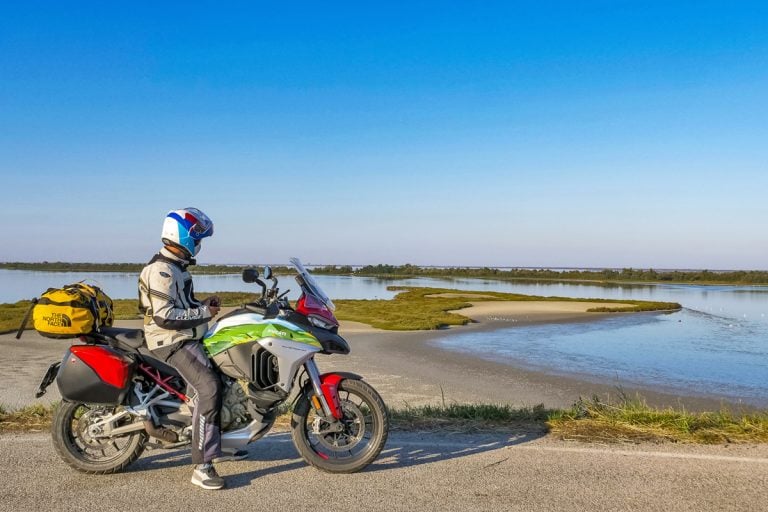
Motorcycle trip through Po Delta Park between Art and Nature
by Davide Marino /// April 21, 2017
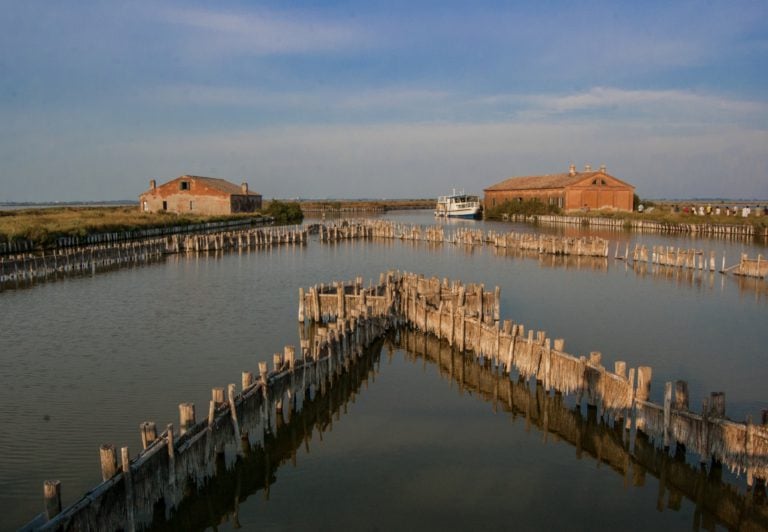
Visit Comacchio: the floating city
by Walter Manni /// May 17, 2018
Leave a Reply Cancel reply
Your email address will not be published. Required fields are marked *

- The Origins
- Active Delta and Fossil Delta
- Countryside
- Fossil Dunes
- Embankments
- Flood Plains
- Fishing Lagoons
- Lagoons and Brackish Inlets
- The Po Delta now
- Rete Natura
- Freshwater Wetlands
- Brackish Water Wetlands
- Dunes, Beaches, and Sandbars
- Amphibians and Reptiles
- Agrarian Reform
- Municipalities
- The Po Delta between Memory and Future. Four Centuries Later the River Po Cut-Off
- Guides and publications
- How to behave
- Protected Areas
- Birdwatching
- History and Archaeology
- By Boat and on Horseback
- Rent a Bike
- Didactic Proposals
- Slow Tourism in the Veneto Parks
- Green Tour - Greenery in Motion
- Water Museum Of Venice
- Download the APP
- Museums and Visitor Centers
- Event archive
- Where to Eat
- Where to Sleep
- Local Products
- Fishing Products
- Letteratura
- Visite guidate
- Noleggio bici
- Escursioni a cavallo
- Escursioni in barca
- Escursioni in canoa
- Offices and Services
- LIFE NatConnect2030
- Completed projects
- Where we are
- Notices and Announcements
- News Archive
- Plan of the Park
- Activities of the Technical Committee
- Transparent Administration until 22/11/2016
- Transparent Administration
- Online Register
- Legal Notices
- List of Thematic Sites
- Authorisation Forms and Applications

Experiences
Come to the territory of the po delta, emotions of water and earth, information, languages ita | en, back to top ^.
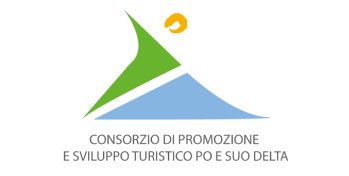
Privacy Policy | Cookie Policy
© Copyright photos: Ente Parco Regionale del Veneto Delta del Po
©2021 Copyright Consorzio di Promozione e Sviluppo Turistico Po e il suo Delta | Via Trieste 3, 45010 Rosolina (RO) | Vat Number: 01497590297
Lingue ITA | EN
Sai già quando arrivi, languages ita | en, do you already know when you arrive.

- Strategy and roadmap
- National Committees
- Secretariat and contact
- Activities and projects
- Capacity building and partnerships
- Good practices
- Prizes and awards
- Carte mondiale
- The list by country
- The list by latest updates
- Designation and review
- Technical guidelines

Related items
- Region: Europe and North America
- Year of Nomination: 2015
- Network: EuroMAB
- Transboundary reserves: No
- Contact MAB
- Bahasa Indonesia
- Slovenščina
- Science & Tech
- Russian Kitchen
Moscow metro to be more tourist-friendly
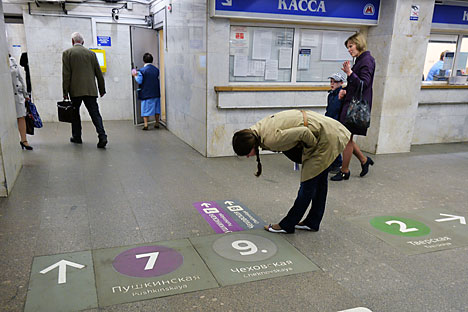
A new floor sign system at the Moscow metro's Pushkinskaya station. Source: Vladimir Pesnya / RIA Novosti
For many years now, Moscow has lagged behind St. Petersburg when it comes to making life easy for tourists, especially where getting around the city is concerned. Whereas the northern capital installed English-language maps, signs and information points throughout its subway system in the late 2000s, the Russian capital’s metro remained a serious challenge for foreign visitors to navigate.
Recent visitors to Moscow may have noticed some signs that change is afoot, however. In many stations of the Moscow subway, signs have appeared on the floor – with large lettering in Russian and English – indicating the direction to follow in order to change lines. Previously, foreign visitors using the Moscow metro had to rely solely upon deciphering the Russian-language signs hanging from the ceilings.
Student volunteers help tourists find their way in Moscow
However, this new solution has a significant drawback. “The floor navigation is visible only to a small stream of people – fewer than three people per meter. During peak hours, this navigation will simply not be noticed,” said Konstantin Trofimenko, Director of the Center for Urban Transportation Studies.
One of the biggest problems for tourists in the Russian capital remains the absence of English translations of the names of subway stations in the station vestibules and on platforms. The Department of Transportation in Moscow has not commented yet as to when this problem will be solved. However, Latin transliterations of station names can already be found in the subway cars themselves.
Finding the right exit
At four of the central stations – Okhotny Ryad, Teatralnaya, Ploshchad Revolyutsii, Lubyanka and Kuznetsky Most – the city authorities have now installed colorful stands at the exits with schematic diagrams of the station’s concourse and surrounding area, which provide information about the main attractions and infrastructural facilities.
The schematic diagrams are the work of British specialists from the City ID and Billings Jackson Design firms, who have already implemented successful projects in New York and London.
According to Alexei Novichkov, expert at the Design Laboratory at the Higher School of Economics, the design of these information booths raises no objections: The color solutions, font, layout and icons are consistent with international standards.
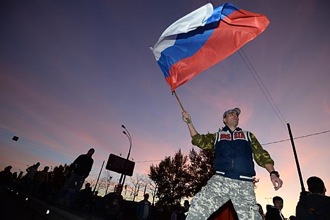
However, the stands do have some shortcomings. “Many questions are raised about the fact that the developers of these maps did not apply orientation to the north, and have provided layouts of the surrounding areas with respect to the exits,” says Novichkov. “A system like that is used for road navigators, but most of the ‘paper’ guides and maps are oriented strictly to north. The subway map is also oriented to north, so people may become confused.”
Muscovites and foreign visitors are generally positive about these navigation elements, with most of them citing the numbered exits from the subway as the most useful feature.
The fact is that many Moscow subway stations have several exits. One of the busiest central stations of the Moscow subway in particular, Kitay-Gorod, has more than a dozen exits. Previously, these exits were differentiated from each other only with signs in Russian referring to the names of streets and places of interest to which they led – making it easy for tourists and those with poor navigation skills to get confused.
Now, when making an appointment to meet a friend, instead of struggling to find the right spot when they tell you: “I'll meet you at the exit to Solyanka Street,” you can just propose to meet under a specific exit number.
“I’ve lived in Moscow for seven years,” says Angelika, a designer from Voronezh, “but I still don’t always know where to go to find the place I need, so the new schematic diagrams will be very useful. Previously, some subway stations had maps, but not with so much detail.”
Teething problems
Foreigners, meanwhile, focus their attention on other elements. “It is good that the new information boards have QR-codes, which can be ‘read’ by smartphones,” says Florentina, a writer from Vienna. But there are also shortcomings. “The English font of the information on posters and in the captions to theaters and museums is too small – you have to come very close to see it well,” she says.
Pleasant encounters on the streets of Moscow
Florentina was also dissatisfied with the fact that such posters are not provided at all subway stations: “When I was trying to find Tsaritsyno Park (a museum and reserve in the south of Moscow) at a subway station with the same name, it turned out to be quite difficult,” she says.
“There are no maps with landmarks for other areas, such as those already in the city center. There were no clear pointers in the English language, and the passers-by I met did not speak in English, so they could not help me,” she adds.
Officials say that the navigation system is gradually being redeveloped and improved. According to Darya Chuvasheva, a press representative for the Department of Transport of Moscow, the introduction of a unified navigation system will take place in stages.
“By the end of 2014, the system will first appear on the first subway stations on the Circle Line. By the end of 2015, we plan to install the system at all major stopping points, subway stations and transport interchange hubs,” says Chuvasheva.
All rights reserved by Rossiyskaya Gazeta.
to our newsletter!
Get the week's best stories straight to your inbox
This website uses cookies. Click here to find out more.

IMAGES
COMMENTS
Delta del Po. SLOW SPRING 2022. Three months full of events, activities, excursions to visit the Po Delta Park and a succession of itineraries and proposals on foot, by bicycle, on horseback and by boat to discover and explore unspoilt landscapes and enjoy unique, authentic experiences in a slow yet safe way.
Newsletter del Po Delta Tourism Iscriviti e resta aggiornato! Concedo il consenso * Iscriviti. Fondo europeo agricolo per lo sviluppo rurale (FEASR) Po Delta Tourism Tourism in Po Delta Park Riviera Consorzio Navi del Delta Corso G. Mazzini n. 136, 44022 Comacchio (FE) Iscrizione Registro Imprese di Ferrara n. 194995 ...
The territory of the Po River and its Delta is a set of Emotions to be experienced. Discover the Relaxation offered by our beaches, shores that have the characteristic of being completely Natural and at the same time equipped with the most modern comfort. You will be enchanted by the extraordinary beauty of the Landscapes that surround you, leaving you bewitched by the amazement of an ...
The Po Delta represents one of Europe's largest nature reserves where nature and people exist side by side.A true paradise for nature lovers, full of birds wintering, nesting or in transit such as herons, ducks, snowy egrets, terns, avocets, black-winged stilts, cormorants, owls, buzzards, as well as mammals such as the awe-inspiring dune deer.
Loads of fun activities and excursions. The Comacchio's lagoons and the Po Delta offer a vast choice of excursions for everyone, adults and children! It's impossible to be bored: you can choose among boat trips, excursions by foot or by bike, horseback trips! Down here you find all the proposals, just click on the ones you are interested in to ...
19.2.02.14_B DESTINAZIONE TURISTICA DELTA DEL PO REALIZZAZIONE DI AZIONI PROMO-COMMERCIALI: Focus area: P6A favorire la diversificazione, la creazione e lo sviluppo di piccole imprese nonche' l'occupazione: Ambito: Primario - Turismo sostenibile: Titolo del progetto: REALIZZAZIONE DI AZIONI PROMO-COMMERCIALI
The Po Delta is a predominantly natural area to the east of Ferrara and north of Ravenna, in the north-east of the Emilia-Romagna region of Italy, where the River Po divides into several smaller rivers before meeting the Adriatic Sea.. Much of the Po Delta is now protected, either as part of the large Parco del Delta del Po, or by one of the smaller nature reserves that are found in the region ...
A visit to the Po Delta Park means having the opportunity to make direct contact with the culture, local traditions and culinary specialities of a land that has always been on the "margins", far away from the chaos of the town centres. Events such as Primavera Slow - which take place every year from March to June - help lovers of ...
64,000 hectares in total, spread over 2 regions; over 400 animal species and nearly 1,000 plant species. These are just a few figures relating to the Po Delta Park, which comes to life from the end of the course of the Great River, on the eastern border with the Po Valley, and stretches over a total area of more than 52,000 hectares in the Emilia Romagna region, between the provinces of ...
The Veneto Regional Park of the Po Delta offers unforgettable experiences.. You will be able to rediscover the pleasure of immersing yourself in Nature by carrying out your favorite activity, alone or accompanied by expert tour guides, to let you tell the Story of this territory so young, but so fascinating.You can dedicate yourself to long walks by bike or on foot, sailing by boat or in canoe ...
Po Delta Tourism organises boat trips to the main nature reserves of the River Po. From the ports of Goro, Gorino or Volano you can take a boat trip on board a small, silent electrically powered boat, into the shallow waters and dense reed thickets around the Po Delta. The Sacca di Goro and the Po di Volano' Nature Reserve are must-see sites ...
On the eastern border of the Po Valley, where the great river, the Po, flows into the Adriatic Sea, along the 40 km of coastline between Ferrara and Ravenna coast and near Argenta, there is a park listed as a UNESCO World Heritage Site: Ferrara, city of the Renaissance and the Po Delta. The Po Delta Park, together with the Veneto side, forms the Po Delta Biosphere Reserve, recognised as a ...
Slow Tourism in the Veneto Parks. Green Tour - Greenery in Motion. Water Museum Of Venice. Download the APP. Excursions. Museums and Visitor Centers. Events + Event archive. ... Po Delta: Man and Nature together for the Development Discover the Delta. Take your time. Po Delta: Man and Nature together for the Development Discover the Delta. Take ...
The beaches of the Po Delta have unique characteristics. Magical places where the Nature is still the protagonist, places where serenity and well-being are undisputed leaders and where a real holiday can satisfy those who want to savor unique and unforgettable moments. The beaches of the Po Delta are also the result of the action of the River ...
The Veneto Regional Park of the Po Delta offers unforgettable experiences.. You will be able to rediscover the pleasure of immersing yourself in Nature by carrying out your favorite activity, alone or accompanied by expert tour guides, to let you tell the Story of this territory so young, but so fascinating.You can dedicate yourself to long walks by bike or on foot, sailing by boat or in canoe ...
Come to the territory of the Po Delta, emotions of Water and Earth. Discover the nature of the Po Delta territory through our proposals. Book online now!
Po Delta Tourism Tourism in Po Delta Park Riviera Consorzio Navi del Delta Corso G. Mazzini n. 136, 44022 Comacchio (FE) Iscrizione Registro Imprese di Ferrara n. 194995
The Po Delta Biosphere Reserve is a delta plain located in northern Italy, produced by the actions of the River Po and recent human activities. It is created by the confluence of the main branches of the river, and comprises coastal dune systems and sand formations, lagoons, fishing ponds, marshes, fossil dunes, canals and coastal pine forests, vast brackish wetlands and cultivated lands ...
Po Delta Tourism, Comacchio. 23,990 likes · 276 talking about this · 188 were here. Scopri con noi il Delta del Po! 囹
According to new Delta Air Lines data, Athens, Greece is seeing the highest surge of travel interest this summer compared to last year. Other top cities include London, Paris, Rome, and Cancun.
However, this new solution has a significant drawback. "The floor navigation is visible only to a small stream of people - fewer than three people per meter.
In 1938, it was granted town status. [citation needed]Administrative and municipal status. Within the framework of administrative divisions, it is incorporated as Elektrostal City Under Oblast Jurisdiction—an administrative unit with the status equal to that of the districts. As a municipal division, Elektrostal City Under Oblast Jurisdiction is incorporated as Elektrostal Urban Okrug.
All the best things to do in Stupinskiy Rayon. Know the popular attractions & nearby tourist places to visit. Pro tips for food, stays, activities, transport & shopping.
Elektrostal is a city in Moscow Oblast, Russia, located 58 kilometers east of Moscow. Elektrostal has about 158,000 residents. Mapcarta, the open map.